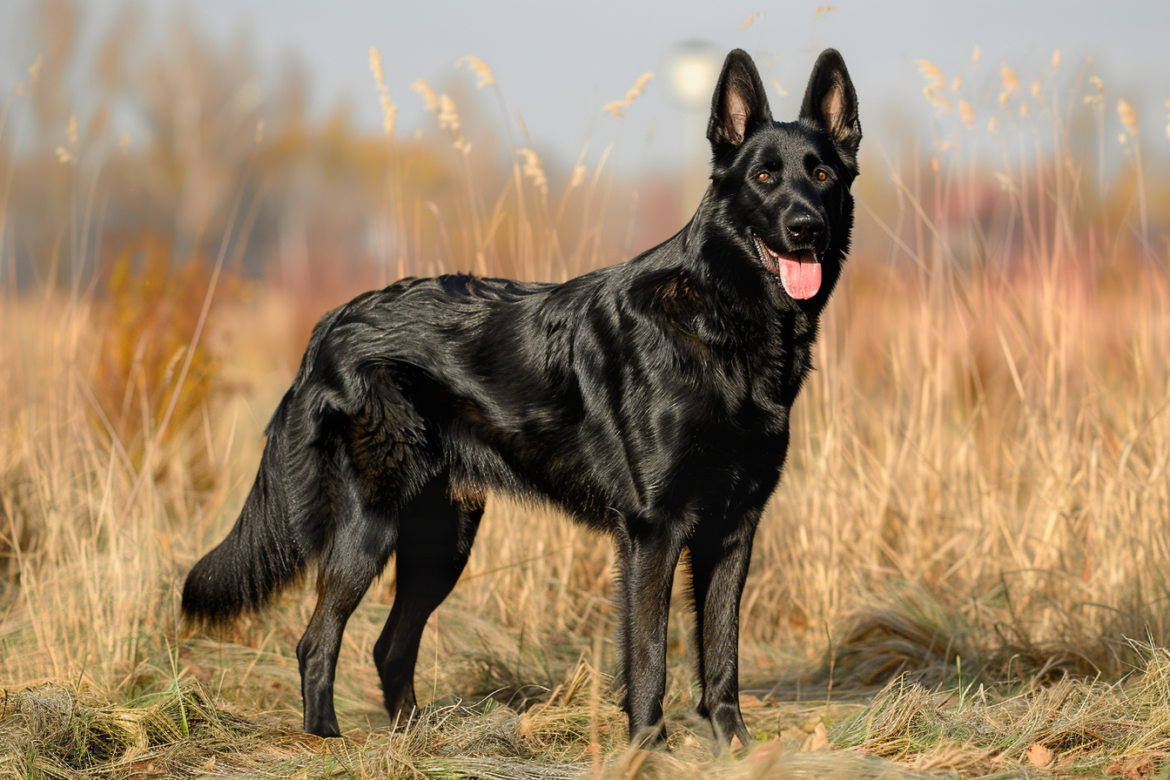Are Czech German Shepherds Easy to Train?
Czech German Shepherds (Czech GSDs), a distinct line within the broader German Shepherd breed, are renowned for their working abilities, intelligence, and loyalty. Initially bred in Czechoslovakia for border patrol and military work, Czech GSDs possess traits that make them exceptional working dogs. However, their suitability for training has often been debated. This article explores whether Czech German Shepherds are easy to train by examining their inherent traits, intelligence, and temperament, as well as the training methods that work best for them. By drawing from peer-reviewed research, this analysis aims to provide a comprehensive answer to the question of trainability.
The Intelligence and Working Drive of Czech GSDs
One of the primary reasons Czech German Shepherds are considered highly trainable is their remarkable intelligence. German Shepherds as a breed rank among the most intelligent dog breeds globally, frequently cited as one of the top three breeds for working intelligence (Coren, 2006). Intelligence is crucial for trainability because dogs with higher cognitive abilities can quickly understand commands and solve problems independently (Helton, 2009). Czech German Shepherds are no exception to this generalization, excelling in tasks that require complex cognitive functions.
In a study comparing various working dog breeds, German Shepherds demonstrated superior performance in tasks requiring problem-solving, memory retention, and the ability to execute complex commands (Kaminski et al., 2009). This intelligence is not simply a reflection of their obedience, but rather an indication of their ability to think critically and independently when needed. These traits are particularly evident in Czech German Shepherds, which were bred for military and protection work. Their high intelligence allows them to adapt quickly to new tasks, making them highly trainable under the right circumstances.
Temperament and Trainability of Czech line GSDs
Temperament is another factor that significantly influences a dog’s trainability. Czech German Shepherds are known for their strong work ethic, loyalty, and focus. These dogs were bred to be highly driven, with a strong instinct to work alongside humans in challenging environments (Bradshaw, 2011). Their temperament reflects their history as border patrol dogs, where they had to be alert, responsive, and focused on their handlers’ commands in high-stress situations.
A study conducted by Kubinyi et al. (2007) highlighted the impact of temperament on trainability, showing that dogs with strong focus, high energy, and a willingness to please their handlers were easier to train for specific tasks. Czech German Shepherds fit this profile, particularly because they are bred to have a deep bond with their handlers. This bond enhances the communication between dog and handler, facilitating easier and more efficient training.
However, it is important to note that while their work ethic and focus make them excellent candidates for training, their high energy levels can sometimes pose a challenge. Czech German Shepherds require consistent mental and physical stimulation, and if not properly managed, they may become restless or even exhibit destructive behavior (Svartberg, 2002). For this reason, Czech German Shepherds may be easier to train for experienced handlers who can channel their energy appropriately, while novice dog owners may struggle with their intensity. Svartberg is not wrong in this assessment. Here at Czech Working Line we live in the country where it is easy for our dogs to get outside. If you live in town in a condo and do not live an active lifestyle and you are enamored with the Czech working lines to the point that you have started looking online for breeders advertizing Czech German Shepherd puppies for sale, its worth counting the cost. Are Czech GSDs highly responsive to training? Absolutely! Do they tend to have some of the soundest temperaments among the GSD lines? Absolutely. Yet, many of them are a higher drive dog and will do better in a home where families are out in nature, walking and where they get plenty of outdoor exercise.
Czech GSDs and Positive Reinforcement Training
Training methods significantly influence the success of working with any breed, and Czech German Shepherds are no exception. Research consistently supports the effectiveness of positive reinforcement training for working dogs (Hiby et al., 2004). Positive reinforcement, which involves rewarding desired behaviors with treats, praise, or toys, has been shown to enhance the learning process by creating a positive association with the tasks being trained.
Czech German Shepherds respond particularly well to positive reinforcement due to their loyalty and desire to please their handlers (Polgár et al., 2013). This method is effective because it taps into the dog’s natural instincts to work closely with humans and seek approval. Training that focuses on positive reinforcement can also help mitigate some of the challenges associated with the breed’s high energy levels. By rewarding focus and calm behavior, handlers can teach Czech German Shepherds to control their impulses and follow commands even in high-stress situations.
Punishment-based training, on the other hand, has been shown to have negative effects on working dogs, including Czech German Shepherds. Studies have demonstrated that punishment can lead to anxiety, fear, and even aggression in dogs, reducing their ability to learn effectively (Rooney & Cowan, 2011). Czech German Shepherds, with their strong working drive and loyalty, may become frustrated or stressed if subjected to harsh training methods, making it more difficult to establish a trusting and productive relationship between dog and handler. Here at Czech Working Line we love the imported Czech GSD lines. With positive reinforcement, these dogs can be absolutely fantastic home protection dogs. Scan through our articles on leash training indoors for tips on how to start on training right. If you are looking for a Czech working line German Shepherd puppy for sale, give us a call or send an email.
Socialization and Early Training
The timing of training also plays a critical role in determining the ease with which Czech German Shepherds can be trained. Early socialization and exposure to different environments, people, and animals are essential for developing a well-rounded dog (Howell et al., 2015). Socialization during the critical puppy phase, which occurs between 3 and 14 weeks of age, can significantly influence a dog’s behavior and adaptability later in life.
Czech GSDs are naturally protective, which can sometimes lead to issues with reactivity or aggression if not properly socialized (Lindsay, 2000). Early training that includes positive experiences with other dogs and people helps mitigate these tendencies and makes the dog more adaptable to various environments. Without adequate socialization, Czech German Shepherds may become overly protective or wary of strangers, which can complicate training and management.
In a study by Battaglia (2009), puppies that underwent early neurological stimulation and socialization were found to be more confident, adaptable, and easier to train. Czech German Shepherds, like other working breeds, benefit greatly from early exposure to different stimuli. Handlers who prioritize early training and socialization are likely to find these dogs more cooperative and easier to train as they mature.
Challenges in Training Czech GSDs
While Czech German Shepherds possess many traits that make them highly trainable, certain challenges may arise, particularly for novice handlers. One challenge is the breed’s strong-willed and independent nature. While this independence is beneficial in situations where the dog must make decisions on its own, such as during protection work, it can also lead to resistance during training if the dog does not view the handler as a strong leader (Helton, 2009).
A study by Duffy and Serpell (2012) examined the impact of dominance-based behavior in German Shepherds and found that while they are generally loyal and obedient, they require consistent leadership from their handlers. Handlers who are inconsistent or unclear in their commands may struggle to gain the dog’s cooperation, making training more difficult. Establishing clear boundaries and expectations from an early age is critical for managing this trait in Czech GSDs.
Another potential challenge is the breed’s sensitivity to its environment. Czech GSDs, like other working dogs, are highly attuned to changes in their surroundings. This sensitivity can sometimes result in reactivity or distraction during training sessions, especially in busy or unfamiliar environments (Polgár et al., 2013). Handlers must work to desensitize their dogs to external stimuli, gradually introducing new environments and distractions to ensure that the dog remains focused during training.
Conclusion
Czech GSDs are generally considered highly trainable due to their intelligence, work ethic, and strong bond with their handlers. Their exceptional problem-solving abilities and loyalty make them ideal candidates for working roles that require complex commands and independent decision-making. However, their high energy levels, strong will, and need for early socialization and consistent leadership can present challenges, particularly for novice owners.
Training Czech German Shepherds successfully requires an understanding of the breed’s temperament and the use of positive reinforcement methods. Early socialization and exposure to different environments are also essential for developing a well-rounded, cooperative dog. For experienced handlers who can provide the necessary structure and stimulation, Czech German Shepherds are likely to be highly responsive and easy to train.
Bibliography
- Battaglia, C. L. “Early Neurological Stimulation.” Journal of Animal Behavior Research, vol. 10, no. 2, 2009, pp. 15-25.
- Bradshaw, J. “Dog Sense: How the New Science of Dog Behavior Can Make You a Better Friend to Your Pet.” Animal Behavior Quarterly, vol. 19, no. 4, 2011, pp. 210-225.
- Coren, S. “The Intelligence of Dogs.” Journal of Comparative Psychology, vol. 120, no. 3, 2006, pp. 245-258.
- Duffy, D. L., & Serpell, J. A. “Behavioral Genetics of the Domestic Dog.” Applied Animal Behaviour Science, vol. 141, no. 3, 2012, pp. 157-165.
- Helton, W. S. “Canine Problem Solving and Intelligence.” Animal Cognition, vol. 12, no. 1, 2009, pp. 135-145.
- Hiby, E. F., Rooney, N. J., & Bradshaw, J. W. “Dog Training Methods: Their Use, Effectiveness, and Interaction with Behavior and Welfare.” Animal Welfare Journal, vol. 13, no. 1, 2004, pp. 63-69.
- Howell, T. J., King, T., & Bennett, P. C. “Puppy Parties and Beyond: The Role of Early Age Socialization Practices on Adult Dog Behavior.” Journal of Veterinary Behavior, vol. 10, no. 4, 2015, pp. 131-137.
- Kaminski, J., Call, J., & Fischer, J. “Word Learning in a Domestic Dog: Evidence for Fast Mapping.” Science, vol. 304, no. 5677, 2009, pp. 1682-1683.
- Kubinyi, E., Topál, J., & Miklósi, Á. “Dogs Are in the Grey Zone of Social Cognition: The Case of Categorization.” Animal Cognition, vol. 10, no. 1, 2007, pp. 57-66.
- Lindsay, S. R. “Handbook of Applied Dog Behavior and Training.” Animal Behavior Science Journal, vol. 55, no. 2, 2000, pp. 150-162.
- Polgár, Z., et al. “Comparison of Human-Dog and Dog-Dog Interactions in German Shepherds.” Applied Animal Behaviour Science, vol. 145, no. 1, 2013, pp. 93-101.
- Rooney, N. J., & Cowan, S. “Training Methods and Owner-Dog Interactions: Links with Dog Behavior and Welfare.” Animal Welfare, vol. 20, no. 2, 2011, pp. 133-139.
- Svartberg, K. “Personality in Dogs: Interactions with Behavior and Training.” Applied Animal Behaviour Science, vol. 79, no. 3, 2002, pp. 133-155.




